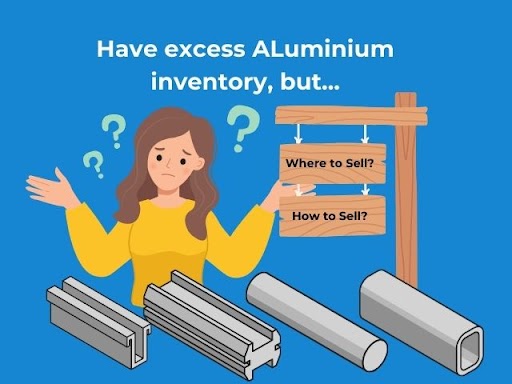Deadweight to profit: The 3-Fold Golden Rule for turning surplus aluminium into smart surplus
Team AL Circle
2024-06-07
The global aluminium industry is a titan. However, even titans struggle with excess baggage. In this instance, surplus aluminium is the baggage. This leftover material can weigh down profitability. But fear not! We can transform this deadweight into an advantage with the 3-Fold Golden Rule of smart surplus management.
But first, let us learn what smart surplus is. 
Smart Surplus refers to strategically and intelligently managing surplus resources, including inventory, funds, or other assets. The aim is to minimise waste. Smart surplus involves data analytics, forecasting, and efficient distribution. All this ensures that surplus is used properly rather than becoming waste.
Rule 1: Know your starting point
The first step is a thorough inventory audit. Not all surplus is created equal. Identify the type, form (sheets, ingots, etc.), and quality of your excess. Some surplus might be prime for immediate resale, while others may require processing or bundling for niche markets. Stockpiles can be grouped into raw, semi-finished, and finished.
- Categorisation: Break down your inventory into the above categories. This will help you understand which category has the most surplus and which can be converted into quick cash.
- Quality assessment: Determine the quality of your surplus. High-quality surplus can be sold at a premium. Meanwhile, the lower-quality surplus may need to be reprocessed. It can also be bundled with other products.
- Market demand: Analyse market trends to identify which types of aluminium are in demand. This will help you prioritise the sale of high-demand items.
Drawbacks of surplus inventory
- High storage cost and space: Surplus inventory takes up valuable storage space, leading to high costs.
- Break in cash flow: Unsold inventory ties up capital that could be used elsewhere.
- Loss of revenue and profits: Excess inventory means potential revenue and profit losses.
- Obsolete/Depreciated inventory: Products can become outdated, leading to depreciation in value.
Rule 2: The digital advantage
Gone are the days of dusty spreadsheets and slow phone calls. Use online marketplaces and B2B platforms designed explicitly for surplus materials. These platforms connect you with a global network of buyers, maximising the chance of finding the perfect match for your surplus. Plus, real-time data on market trends helps you price your aluminium competitively.
- Remarket and reposition: Revamp your product marketing strategy. Use strategic product placement. Rely on search engine optimisation (SEO), and social media to increase visibility and sales.
- Product placement: Are some products not getting attention? Place them smartly on your website and social media. Depict them in your ads and see how quickly they become a hit.
- Search engine optimisation (SEO): If your products aren’t selling even after a few months, it is high time to try copywriting and SEO. SEO makes your product visible to more audiences, which, of course, leads to higher chances of sales.
- Email marketing campaigns: Run targeted email campaigns to your customer base, highlighting special deals on surplus inventory.
- Conduct a sale: Use techniques like ABC analysis to classify inventory and hold sales such as clearance, flash, and seasonal sales to move surplus stock. Some places you can make sales include AL CircleBiz , AluConnect, and Alibaba.
Rule 3: Collaborate with local partners
Don't go it alone! Partner with other players in the aluminium industry. Local smelters might be interested in lower-grade surplus for remelting. Fabrication shops can utilise your offcuts for smaller projects. Collaboration fosters a win-win situation, creating a circular economy within the industry. Imagine a network of aluminium heroes, each wielding surplus like a powerful tool to strengthen the industry as a whole.
Building strategic partnerships
- Local smelters: Partner with local smelters who can use lower-grade surplus for remelting. This not only helps you offload surplus but also supports local businesses.
- Fabrication shops: Collaborate with fabrication shops that can use your offcuts for smaller projects. This turns potential waste into valuable materials for other manufacturers.
- Industry networks: Join industry networks and trade associations to find potential partners. These platforms can provide valuable connections and insights into market needs.
- Shared warehousing: Consider shared warehousing arrangements with other companies. This can reduce storage costs and facilitate easier exchange of surplus materials.
Aluminium surplus isn't a burden—it's an opportunity. By using the 3-Fold Golden Rule, you can transform surplus into "smart surplus.” This generates revenue and reduces waste. By sticking to these principles, you can ensure efficient and accurate inventory management. Surplus inventory is a real challenge for many businesses. However, it is a manageable and even profitable part of the business with the right strategies.
Categories
Raw Materials
Scrap
Consumables
Primary Aluminium
Secondary Aluminium
Equipment
Technology
Downstream Products
Finished Products
Utilities
Services
Others
Recent Blogs
Subscribe to newsletter
Connect with us












